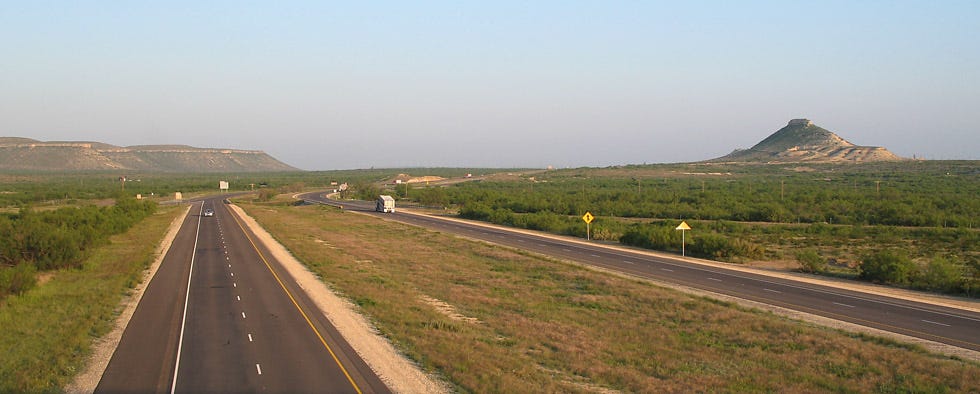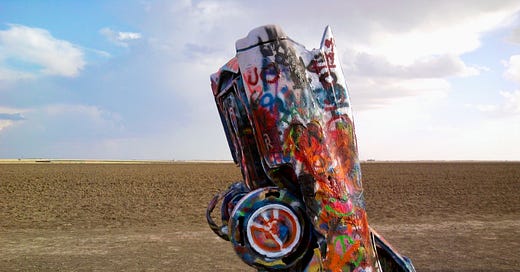I’m an American writer living in Aotearoa New Zealand, and this is my weekly letter home. All the madness of late has me missing things. This one’s the first in an occasional series.
Here in the Wairarapa folks rejoiced when the National government recently raised the speed limits on State Highway 2 back to 100 kph. That’s just 62 miles per hour. May sound pokey for a national highway but we’re talking about a two-lane country road thick with tractors, log trucks, sheep trucks, school buses, and a daily Wellington commute. In the Jacinda years Labour had knocked it down to a stately 80 kph—just 50 mph! You could hear the howls up and down the valley. The return to 100 kph has felt to many here like waking from a long nap.
Me, I never cared. I’m a grad student these days. School drop-offs are my only commute. Drive 80 or 100, I’m still late getting the kids to piano lessons.
The truth is I just don’t care about going fast on State Highway 2. I don’t care about going fast on any of New Zealand’s pretty byways. I don’t care because there is no road here that runs fast enough, straight enough, and far enough to stir my gringo driving soul. On the restless days I wish there was.
I’m homesick for the interstate, y’all.
Not interstates, plural. Not the clogged, grey expressways of the East or the tree-crowded yawners of the South. I’m talking the empty quarters. I’m talking out where it’s always the singular interstate, less a road than a motion through space.
I’m talking I-40’s high-plains drift from Las Vegas to Amarillo, where it runs right by good ol’ Cadillac Ranch. (That’s my own pic above. Can’t remember that trip now.) I-25 from El Paso up the spine of New Mexico to Pueblo CO. I-70 following the Platte across Nebraska. I-90 anywhere west of the Mississippi. Lines to measure the curve of the earth. Speed limits running 75, 80, and even 85 mph—136 kph!—across in the wilds of Far West Texas.

It’s that last one I drive in my dreams: Interstate 10, the king of the desert, mother road of the Southwest, on its thousand-mile run from Phoenix to San Antonio. Let’s cut the sprawl and say from the Triple T Truckstop (now for sale!) on Tucson’s southeastern edge all the way to where the twin bridges cross the Llano River at Junction, TX. Drive west of Tucson and you’re stuck in shiny LA/Vegas/Phoenix traffic ignoring the meaner Mojave desert. Drive east of Junction and the humidity and population density thicken like gravy as you creep into America’s muggy, crowded eastern half.
In between, though, you sail over the Sonoran and Chihuahuan deserts like a test pilot pressing the boundaries of space and time. I’ve done it bunches, mostly in a Toyota pickup whose four cylinders don’t even like to go 85. I remember a mattress flapping in the bed one of the two or three times I moved to Texas. A winter afternoon outside Lordsburg NM when rain turned the bar ditches to silver alkaline lakes. A sunburnt hitchhiker I picked up in El Paso who growled for beer but drank my water. Cranking Kid A in a driving hailstorm just past the Sierra Blanca checkpoint. You always buy a gas station burrito for the ninety miles of golden limestone nothing between Ozona and Sonora. Years ago, before cell phones, a couple friends ran out of gas out there. They had a football in the truck, and nothing to do but toss it back and forth until someone stopped to help. When they finally arrived at my place, hours late, they told the tale in weary wonder. On the interstate’s broad shoulder they’d reached some higher, simpler geometry before returning once more to the messy, human Earth.
“The old road started from and led to the city,” the geographer J.T. Snow wrote back in 1967.1 “The New Road starts everywhere and leads nowhere.” Ah, but this is the joy! The motion of the interstate is perpetual, faceless, abstract. You, citizen driver, join a national alternating current in a closed high-voltage loop. You have no vector but the horizon. To quit moving you unplug, you shrink, you exit. Eisenhower started building the “Interstate Highway System” back in the 1950s so we’d be ready to scurry troops around in a nuclear war. The last link of I-10 was paved in Phoenix in 1990, just a few miles from our house. I was nearly twelve. I’m a New Road child of nowhere. Is anybody goin’ to San Antone?

New Zealand’s the opposite. The big roads are weirdly ‘state highways’ but there are no states, and very little inter.2 The endless quilt of paddocks and hedges, the postage-stamp suburbs, the basic compressions of island life: most everywhere here feels like somewhere. There are te reo Māori names for every hill and dale, with English names layered unevenly on top. The newly 100 kph stretch of State Highway 2 crosses three rivers in twenty miles, plus four distinct towns, plus a bunch of non-towns without obvious borders, vague pockets of green space named Tauwharenīkau and Clareville and Taratahi and Waingawa and Upper Plain. I’m always grounded here, like it or not.
There’s lonesome drives here, sure. The Desert Road, for a hot minute. Napier to Taupō got pretty quiet up there by the waterfall. Ain’t been to Northland or Southland yet. I’m dying to drive Highway 35 around the East Cape, proudly Māori and famously remote—not coincidentally, the only road I ever see Kiwis ever rep on bumper stickers. That numbered shield always turns my head: there’s an I-35 in Texas, too, an unloved six-lane gullet of gun shops, chain steakhouses, and billboards demanding our immediate exit from the United Nations.
I-10, though! I miss you, I-10. Some Youtuber fixed a camera to his hood and uploaded the whole road in eight-hour chunks, just because it’s there. It’s not enough. I-10’s a full-body experience. Our last drive in America before the pandemic landed us here, in fact. Westward we did it, into the future, into the sun.
This morning in Greytown I woke in the dark and heard the whistle of the morning train. The platform is just five kms from my pillow, but it’s not even Greytown anymore. It’s called Woodside.
What is Woodside? I do not know. The whistle was too short and polite to be lonesome. Just the daily run to Welly. I closed my eyes and put that pedal to the floor. //
As quoted in Edward Relph’s Place and Placelessness (1976), in a green library hardback that’s become my beloved grad-school grimoire.
State Highway 1 from Hamilton to Auckland is the chief exception. High-voltage powerlines, cheerless tract housing, and a rocketship Mormon temple: Anytown, USA.






Thank you so much, not just for the evocative writing, but for making me remember my late mother, a tiny force of nature who loved to drive her big Peugeot fast on the straights in the Rangitīkei where she lived. Two days after she died peacefully at 83 my brother and opened her mail to find her final speeding ticket - 123km in a 100km zone.
I hope there's an Interstate in heaven where she can put her foot down and go all out!
Yes, and you took me along for the ride.